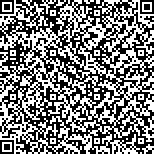下载中心
优秀审稿专家
优秀论文
相关链接
摘要

热红外遥感提供地表表层辐射信息为主,被动微波遥感可更好地提供植被和土壤背景垂直结构的辐射信息。结合热红外与被动微波遥感的优势协同反演植被和土壤组分温度是提高组分温度反演精度的一种思路。本文在对热红外辐射传输模型和微波辐射模型进行比较的基础上,构建均匀作物的统一场景,将统一场景的参数分为直接参数和间接参数。基于统一场景,修改微波辐射模型的场景结构及叶倾角分布,并增加组分温度参数以计算辐射亮温,最终构建热红外与微波辐射联合模拟模型(UEasmmes模型)。针对均匀玉米作物,利用UEasmmes模型进行联合模拟,分析了组分温度、组分发射率、叶面积指数LAI及叶倾角分布LAD对热红外与微波的方向性亮温DBT的敏感性响应差异。分析结果表明:协同热红外与被动微波遥感反演植被和土壤组分温度是可行的,但对于如何克服组分发射率、LAI及LAD对植被有效发射率的影响而导致的微波辐射亮温变化以及实现热红外表皮温度与微波等效温度之间的转化仍是需要深入研究和探讨的问题。
Thermal infrared remote sensing mainly provides information on the radiation of the land surface, whereas passive microwave remote sensing can provide information on the radiation of vegetation and soil vertical structure. Therefore, the new approach, which combines the advantages of thermal infrared and passive microwave remote sensing, aims to improve inversion precision through the synergy inversion of vegetation and soil component temperature. In this paper, a comparative analysis is comprehensively performed between the Emissivity and Scattering by Arbitrarily Inclined Leaves Model (Easail) and the Microwave Emission and SCAttering Model (MESCAM). A unified scene of homogeneous crops is also constructed, wherein the parameters of the two models are divided into two categories: direct and indirect. The scene construction and Leaf Area Distribution (LAD) function of the MESCAM model is modified. The microwave radiation brightness temperature is then computed by introducing component temperature variables into the MESCAM model. Therefore, a joint simulation model, United Easail Modified MESCAM model (UEasmmes), is constructed. The UEasmmes model is adopted to simulate the Directional Brightness Temperature (DBT) over homogeneous corn. The sensibility differences of the component temperature, component emissivity, leaf area index, and LAD toward the thermal infrared and passive microwave DBT are analyzed in depth. The simulation results reveal the feasibility of retrieving component temperature by combining thermal infrared with microwave remote sensing. However, further research is needed to determine how to overcome the significant change in brightness temperature induced by canopy effective emissivity in the microwave domain owing to the change in component emissivity, LAI, or LAD and the interconvert between the thermal infrared surface temperature and the microwave equivalent temperature.

